After a two-year exile from the projector land, JVC is seeking to stamp its authority again on the high-end market with the release of its latest generation of D-ILA projectors which were announced at IFA 2015 in September last year. After extensively testing the JVC DLA-X7000 – the middle child of the company’s three-strong lineup – over the past few weeks, we’re just going to come right out and say it: no other sub-£6000 projector can match the X7000’s picture quality for watching movies either in SDR (standard dynamic range) or HDR (high dynamic range).
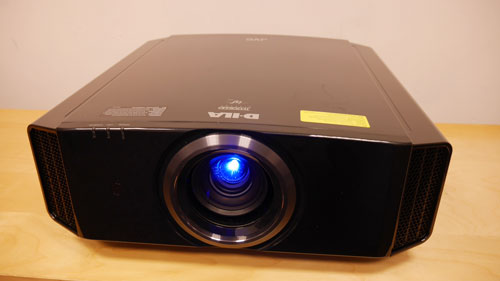
As always, the JVC’s trump card was unrivalled black level rendition – DILA projectors are essentially the OLED equivalent in the projector world. Because of the inky black floor, contrast and colours on the DLA-X7000BE also popped with a richness and intensity that couldn’t be matched by rival projectors, a phenomenon that can partly be explained by the Helmholtz-Kohlrausch effect (many thanks to Robert Heron at HeronFidelity.com for first introducing us to this term).
And the JVC X7000B’s colour accuracy was right up there with the very best too, at least in the [THX] picture preset. Even though [Color Profile] and [Color Temp] are fixed to “THX” and “6500K” respectively in [THX] mode, they still provide a colour management system (CMS) and two-point white balance controls. The [THX] preset also locks the [Gamma] setting to “THX” with no adjustable [Correction Value], but the [Picture Tone] options are still available, letting us dial gamma close to our dark-room target of 2.4, as well as rectify the crushed shadow detail at default [THX] settings.
Here are the results of our calibration, with the highlight being the Colour Checker SG chart showing that none of the 140 measured colour patches exhibited errors that are visible to the human eye in real-life content, a testament to the outstanding colour fidelity achieved by JVC and THX. Well done!
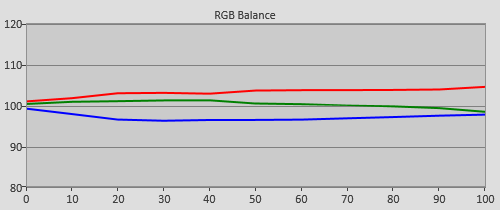 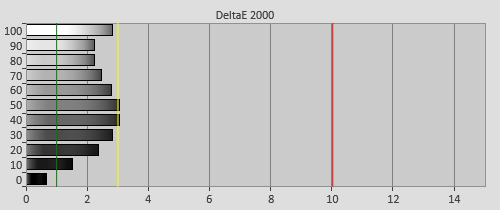 |
| Pre-calibration RGB tracking and delta errors (dEs) |
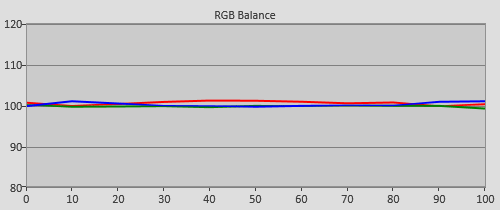 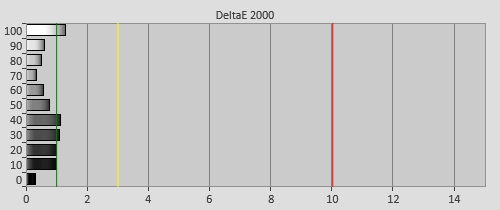 |
| Post-calibration RGB tracking and dEs in [THX] mode |
![Pre-calibrated Gamma tracking in [THX] mode](https://www.hdtvtest.co.uk/news/wp-content/uploads/2018/04/projector_JVC-X7000_pre-gamma.png) | ![Post-calibrated Gamma tracking in [THX] mode](https://www.hdtvtest.co.uk/news/wp-content/uploads/2018/04/projector_JVC-X7000_post-gamma.png) |
| Pre-calibration gamma tracking (2.29) | Post-calibration gamma tracking (2.41) |
![Post-calibration Colour saturation tracking in [THX] mode](https://www.hdtvtest.co.uk/news/wp-content/uploads/2018/04/projector_JVC-X7000_post-strack.jpg) |
| Post-calibration colour saturation tracking in [THX] mode |
![Post-calibration colour errors in [THX] mode](https://www.hdtvtest.co.uk/news/wp-content/uploads/2018/04/projector_JVC-X7000_post-strack-de.png) |
| Post-calibration colour errors (<3 not appreciable to the eye) |
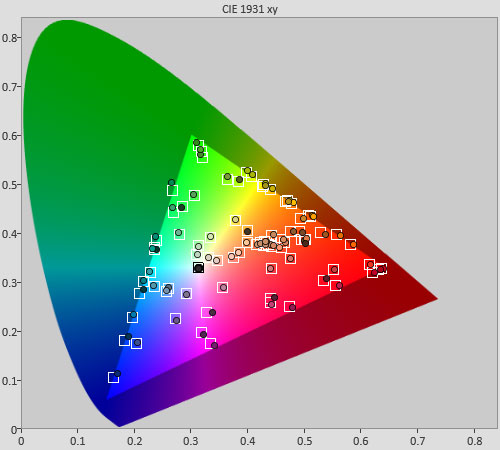 |
| Post-calibration Colour Checker SG test in [THX] mode |
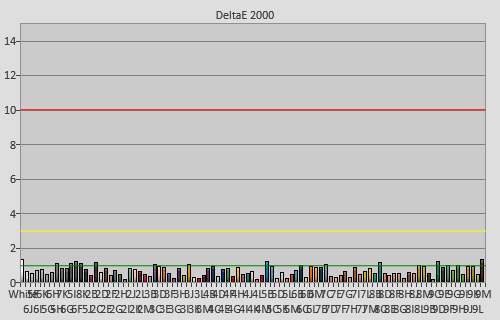 |
| Post-calibration Colour Checker SG errors (<3 not appreciable to the eye) |
While we haven’t tested a retail production unit of the step-down DLA-X5000 that’s not blessed with a [THX] picture preset, we doubt it could reach this level of colour accuracy without the help of an external 3D LUT processor, thus making a more compelling case for the THX-certified DLA-X7000 albeit at a higher price point. [THX] mode also correctly disables most of the superfluous video processing (such as [Clear Black], [Enhance], [Dynamic Contrast], [Smoothing] and [NR]) by default.
JVC’s projectors have always featured processing that respects the filmic integrity of the source, and the DLAX7000 was no different. 1080p/24 from Blu-ray films were handled smoothly without any sign of telecine judder, and film grain remained intact once all the noise reduction settings were switched off. And when class-leading blacks, accurate colours and 2.4 gamma were added to the equation, the sum total was an extremely cinematic image that we simply couldn’t peel our eyes away from.
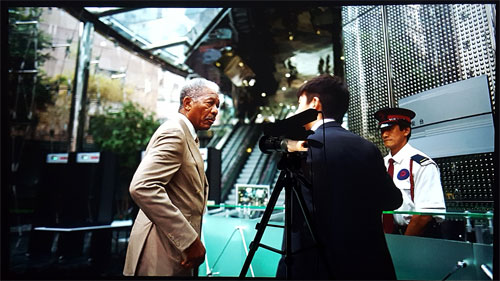
[Clear Motion Drive] on the JVC DLA-X7000BE was more usable than previous versions: the “Low” setting only introduced minimal soap opera effect (SOE) to 24fps material and interpolation artefacts, yet more than doubled motion resolution (as determined via the horizontally scrolling lines pattern in Chapter 31 of the FPD Benchmark Software test disc) to 650 lines from the usual sample-and-hold baseline of 300. [Motion Enhance], found under the [Blur Reduction] submenu, merely activated motion-adaptive edge enhancement resulting in visible ringing around moving objects; we do not recommend engaging it for critical viewing.
JVC has also improved its “e-Shift” pseudo-4K technology – now in its fourth iteration – on the X7000. With [4K e-shift] enabled, the picture remained stable with little sign of the shimmering/ flickering artefact affecting densely packed lines previously observed on the 2013/2014 X500 model. There’s still some blurring of fine detail (an unexpected bonus of which was the reduction in visible pixel grid) that couldn’t be dialled out by re-focusing or upping sharpness, so we’d still switch e-Shift off for pristine 1080p content.
Click on the options below to compare modes:
[4K eshift] off | [4K eshift] on
![[4K eshift] off](https://www.hdtvtest.co.uk/news/wp-content/uploads/2018/04/projector_JVC-X7000_eshift-off.jpg)
Due to the use of active-shutter glasses (ASG) 3D technology, tri-dimensional image was always going to look dimmer, and there’s a touch of crosstalk too, but at least the JVC DLA-X7000 delivered full HD 3D resolution (verified using our own custom-authored 3D resolution test pattern), and exhibited no judder with 24Hz, 50Hz and 60Hz material in the third dimension. Whilst [Lamp Mode] defaulted to “High” in 3-D mode, this could be set to “Low” if the fan noise bothers you, but of course the 3D picture would look even darker. Note that the £5,699 option doesn’t ship with 3D sync emitter or glasses that are required for 3-dimensional viewing, though we’re informed that a pricier £6,100 package will include two pairs of PK-AG3 RF 3D glasses and a PK-EM2 RF Synchro Emitter.
Given that HDR standard for projectors is still in a state of flux (the Ultra HD Premium certification programme even specifically excludes projectors at this time of publication), all we can say after sampling numerous Ultra HD Blu-rays through a Samsung UBD-K8500 player was that the JVC X7000 didn’t evince judder with 2160p/24 signal, and presented more highlight detail and greater colour spectrum than corresponding Blu-rays.
Upon detecting the relevant HDR10 metadata, the DLA-X7000BE will automatically switch its [Gamma] setting to “D” for the most appropriate tone-mapping, although substantial adjustments still needed to be made to [Picture Tone], [Bright Level] and [Dark Level] values to get close to ST2084 PQ (perceptual quantizer) EOTF (electro-optical transfer function):
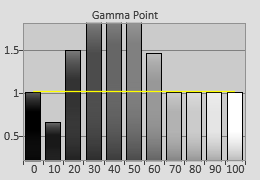 | 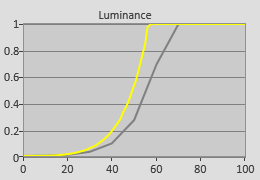 |
| Gamma D tracking | PQ EOTF tracking |
DCI-P3 gamut coverage came in at 94%, which is wider than the Sony VW520 but lower than the Epson LS10000:
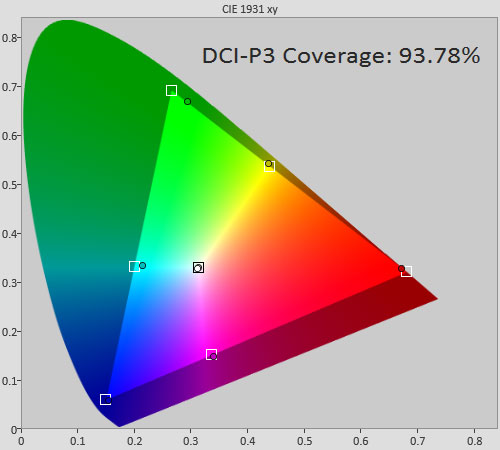
According to our measurements, [Color Profile] “Reference” was actually more faithful to the Rec.2020 UHD standard than the newly imported “BT2020“:
![Rec.2020 tracking with [Color Profile] Reference](https://www.hdtvtest.co.uk/news/wp-content/uploads/2018/04/projector_JVC-X7000_hdr-reference.jpg) |
| [Color Profile] “Reference” tracking against Rec.2020 standard |
![Rec.2020 tracking with [Color Profile] BT2020](https://www.hdtvtest.co.uk/news/wp-content/uploads/2018/04/projector_JVC-X7000_hdr-bt2020.jpg) |
| [Color Profile] “BT2020” tracking against Rec.2020 standard |
JVC seems to be 100% focused on catering to video enthusiasts rather than gamers, since gaming responsiveness remained eyewateringly sluggish on the DLAX7000: our Leo Bodnar input lag tester returned a downright unplayable figure of 139ms. If reflex-based gaming is important to you, then a Sony projector or a 2015/2016 Samsung TV would be a better choice.

There’s not much to write about the design of the X7000 – it uses the same chassis as previous JVC home theatre projectors with a glossy black finish. Two HDMI 2.0 ports are found at the rear of the projector: both accepted and displayed 3840×2160@60Hz video signal with HDCP 2.2 copy protection from a Murideo Fresco Six-G test device. Be aware that HDMI handshake could take a while, and on our DLAX7000BE review sample there’s some brightening of edges on a blank screen while this process was taking place.
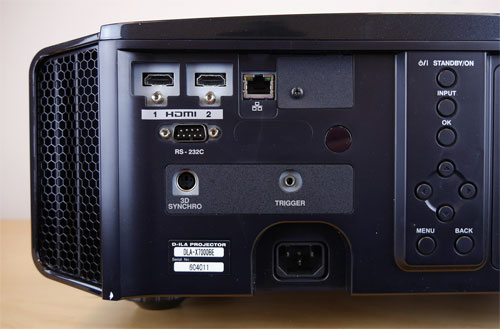
It’s the improvements under the hood though (including HDR compatibility, wide colour gamut, THX-tuned colour accuracy as well as JVC’s traditional strength of formidable blacks) that got us really excited about the DLA-X7000. Welcome back JVC… you have been sorely missed.
